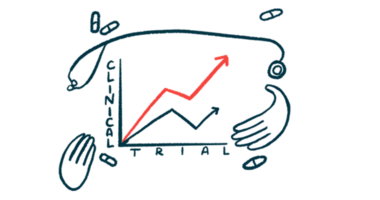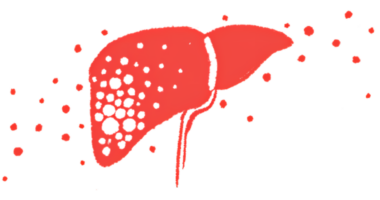SPK-8016 for hemophilia A
Last updated Feb. 6, 2024, by Margarida Maia, PhD

What is SPK-8016 for hemophilia?
SPK-8016, also known as RG6358, is an experimental gene therapy that was being investigated for hemophilia A patients who had developed neutralizing antibodies (inhibitors) against clotting factor VIII (FVIII).
The therapy was developed by Spark Therapeutics, now part of Roche, to be given as a one-time intravenous (into-the-vein) infusion. However, the company decided to discontinue its clinical development in 2023 due to financial reasons.
Therapy snapshot
| Treatment name: | SPK-8016 |
| Administration: | Intravenous infusion |
| Clinical testing: | Discontinued after being tested in a Phase 1/2 clinical trial |
How does SPK-8016 work in hemophilia?
Hemophilia A is caused by mutations in the F8 gene, which provides instructions for making FVIII, a clotting protein found in the blood. Without FVIII, the blood cannot clot properly to stop bleeding. As a result, people with hemophilia A may experience prolonged bleeding episodes that can be difficult to control.
Replacement therapy is often used in hemophilia patients to supply the missing clotting factor and ensure that blood can clot properly. This is typically done by infusing FVIII concentrates directly into the bloodstream. However, up to 30% of patients develop antibodies against the infused FVIII, which may reduce the efficacy of replacement therapies.
SPK-8011 was designed to deliver a shorter but working version of the F8 gene to liver cells, the body’s main producers of clotting factors. The working gene was packaged inside a modified virus called adeno-associated virus (AAV), which does not cause disease in humans.
Once in liver cells, the working gene would be unloaded from the vector, and liver cells would use its instructions to make FVIII on their own. This was expected to increase FVIII levels in the blood regardless of the presence of inhibitors, thereby helping to prevent and control bleeding episodes in people with hemophilia A.
How was SPK-8016 administered in hemophilia?
In a clinical trial, SPK-8016 was given as a single intravenous infusion at a dose of 5×1011, or 0.5 trillion, vector genomes per kilogram of body weight (vg/kg).
SPK-8016 in hemophilia clinical trials
A Phase 1/2 clinical trial (NCT03734588) was designed to test the safety and efficacy of SPK-8016 in people with severe hemophilia A.
The trial was meant to have two parts: Part 1 would include people without neutralizing antibodies against FVIII who would receive ascending doses of the medication to inform the design and dose used in the second part, which would include people with inhibitors. However, only four patients were enrolled in Part 1, and it’s not known if any participants received the medication in Part 2.
Participants in Part 1 included four men, ages 18 to 63, who had previously received replacement therapy but had no signs of inhibitors against FVIII. All were given a single intravenous infusion of SPK-8016 at a dose of 0.5 trillion vg/kg.
The goal was to study the treatment’s safety and tolerability, as well as changes in the number of bleeds and need for FVIII infusions over 52 weeks, or about one year.
Results showed FVIII levels increased to somewhere between 5.9% and 21.8% in all patients after up to 18 months of follow-up. Participants also required 98% fewer infusions of FVIII, and the number of bleeds per year dropped by 85% over that period.
Notably, three patients stopped their regular prophylaxis, or preventive treatment (ABS197), whereas one patient who was receiving only on-demand replacement therapy saw his bleed rate drop from 18 per year to zero after treatment with SPK-8016.
The gene therapy was deemed safe, with no serious adverse events and no patients developing antibodies against FVIII. Three patients required immunosuppressive treatment due to a suspected immune response against the viral vector. However, none of the patients had a persistent elevation in liver enzymes, which would have been a sign that the liver may be damaged.
Common side effects of SPK-8016
The most common side effects associated with treatment with SPK-8016 have not been reported yet. However, no serious side effects related to the gene therapy were reported during clinical testing.
Hemophilia News Today is strictly a news and information website about the disease. It does not provide medical advice, diagnosis, or treatment. This content is not intended to be a substitute for professional medical advice, diagnosis, or treatment. Always seek the advice of your physician or other qualified health provider with any questions you may have regarding a medical condition. Never disregard professional medical advice or delay in seeking it because of something you have read on this website.
Recent Posts
Related articles






